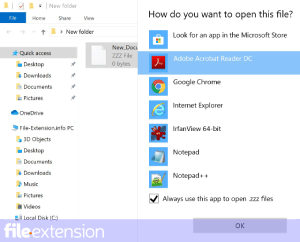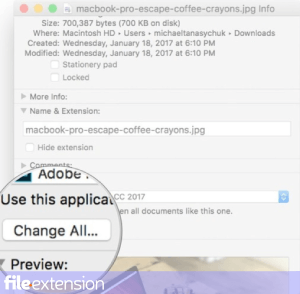
PJPEG File Extension
Progressive JPEG Image
-
Category
-
Popularity3 (3 votes)
What is PJPEG file?
Files with the PJPEG extension belong to the category of graphic files.
What do PJPEG files contain?
Content of files with the PJPEG extension includes raster images. The letter P in the name indicates the progressive features of this format compared to the original JPEG. In PJPEG files you can find:
- bitmap images,
- photos,
- drawings,
- diagrams,
- 2D graphics.
What are PJPEG files used for?
Files with the PJPEG extension were used in the not too distant past, when internet connections did not yet have the modern bandwidth. Extended functionalities of PJPEG compared to JPEG allowed for a gradual sharpening of the graphic file's view. On slow connections, images in PJPEG files would slowly appear in the browser window, but from the very beginning of loading, the user could see an outline of the graphic. With the receipt of additional data, the bitmap in the PJPEG file became more detailed, until the final effect. Thus, files with the PJPEG extension were used to enhance the appearance of web pages, which without their application would remain visually unattractive for the user due to slow data loading on low-bandwidth connections.
Can I open PJPEG files?
Currently, files with the PJPEG extension are no longer so commonly used, because the improvement of network infrastructure parameters has practically eliminated long image loading times. Nevertheless, files with the PJPEG extension can still be encountered. To be able to open them, it is necessary to manually change the extension from PJPEG to JPG, and then double-click the modified file. The default application in the system associated with graphic files should have no problems opening such a modified PJPEG file. To change files with the PJPEG extension to other popular graphic formats, special converters can also be used. Some of them operate online, allowing the user not to have to install software to handle files with the PJPEG extension on their computer.
Programs which support PJPEG file extension
Files with PJPEG extension, just like any other file formats, can be found on any operating system. The files in question may be transferred to other devices, be it mobile or stationary, yet not all systems may be capable of properly handling such files.
Updated: 02/29/2024
How to open file with PJPEG extension?
Problems with accessing PJPEG may be due to various reasons. On the bright side, the most encountered issues pertaining to Progressive JPEG Image files aren’t complex. In most cases they can be addressed swiftly and effectively without assistance from a specialist. The following is a list of guidelines that will help you identify and solve file-related problems.
Step 1. Download and install Microsoft Internet Explorer
 The main and most frequent cause precluding users form opening PJPEG files is that no program that can handle PJPEG files is installed on user’s system. This one is an easy one. Select Microsoft Internet Explorer or one of the recommended programs (for example, Adobe Photoshop) and download it from appropriate source and install on your system. The full list of programs grouped by operating systems can be found above. If you want to download Microsoft Internet Explorer installer in the most secured manner, we suggest you visit Microsoft Corporation website and download from their official repositories.
The main and most frequent cause precluding users form opening PJPEG files is that no program that can handle PJPEG files is installed on user’s system. This one is an easy one. Select Microsoft Internet Explorer or one of the recommended programs (for example, Adobe Photoshop) and download it from appropriate source and install on your system. The full list of programs grouped by operating systems can be found above. If you want to download Microsoft Internet Explorer installer in the most secured manner, we suggest you visit Microsoft Corporation website and download from their official repositories.
Step 2. Check the version of Microsoft Internet Explorer and update if needed
 If the problems with opening PJPEG files still occur even after installing Microsoft Internet Explorer, it is possible that you have an outdated version of the software. Check the developer’s website whether a newer version of Microsoft Internet Explorer is available. Sometimes software developers introduce new formats in place of that already supports along with newer versions of their applications. If you have an older version of Microsoft Internet Explorer installed, it may not support PJPEG format. The most recent version of Microsoft Internet Explorer is backward compatible and can handle file formats supported by older versions of the software.
If the problems with opening PJPEG files still occur even after installing Microsoft Internet Explorer, it is possible that you have an outdated version of the software. Check the developer’s website whether a newer version of Microsoft Internet Explorer is available. Sometimes software developers introduce new formats in place of that already supports along with newer versions of their applications. If you have an older version of Microsoft Internet Explorer installed, it may not support PJPEG format. The most recent version of Microsoft Internet Explorer is backward compatible and can handle file formats supported by older versions of the software.
Step 3. Set the default application to open PJPEG files to Microsoft Internet Explorer
If the issue has not been solved in the previous step, you should associate PJPEG files with latest version of Microsoft Internet Explorer you have installed on your device. The process of associating file formats with default application may differ in details depending on platform, but the basic procedure is very similar.

Change the default application in Windows
- Right-click the PJPEG file and choose option
- Select
- To finalize the process, select entry and using the file explorer select the Microsoft Internet Explorer installation folder. Confirm by checking Always use this app to open PJPEG files box and clicking button.

Change the default application in Mac OS
- Right-click the PJPEG file and select
- Open the section by clicking its name
- Select the appropriate software and save your settings by clicking
- A message window should appear informing that This change will be applied to all files with PJPEG extension. By clicking you confirm your selection.
Step 4. Check the PJPEG for errors
If you followed the instructions form the previous steps yet the issue is still not solved, you should verify the PJPEG file in question. Problems with opening the file may arise due to various reasons.

1. The PJPEG may be infected with malware – make sure to scan it with an antivirus tool.
If the PJPEG is indeed infected, it is possible that the malware is blocking it from opening. Immediately scan the file using an antivirus tool or scan the whole system to ensure the whole system is safe. If the PJPEG file is indeed infected follow the instructions below.
2. Ensure the file with PJPEG extension is complete and error-free
If the PJPEG file was sent to you by someone else, ask this person to resend the file to you. During the copy process of the file errors may occurred rendering the file incomplete or corrupted. This could be the source of encountered problems with the file. When downloading the file with PJPEG extension from the internet an error may occurred resulting in incomplete file. Try downloading the file again.
3. Ensure that you have appropriate access rights
There is a possibility that the file in question can only be accessed by users with sufficient system privileges. Log out of your current account and log in to an account with sufficient access privileges. Then open the Progressive JPEG Image file.
4. Check whether your system can handle Microsoft Internet Explorer
If the system is under havy load, it may not be able to handle the program that you use to open files with PJPEG extension. In this case close the other applications.
5. Verify that your operating system and drivers are up to date
Regularly updated system, drivers, and programs keep your computer secure. This may also prevent problems with Progressive JPEG Image files. It may be the case that the PJPEG files work properly with updated software that addresses some system bugs.
Conversion of a PJPEG file
File Conversions from PJPEG extension to a different format
File conversions from other format to PJPEG file
Do you want to help?
If you have additional information about the PJPEG file, we will be grateful if you share it with our users. To do this, use the form here and send us your information on PJPEG file.

 Windows
Windows 

